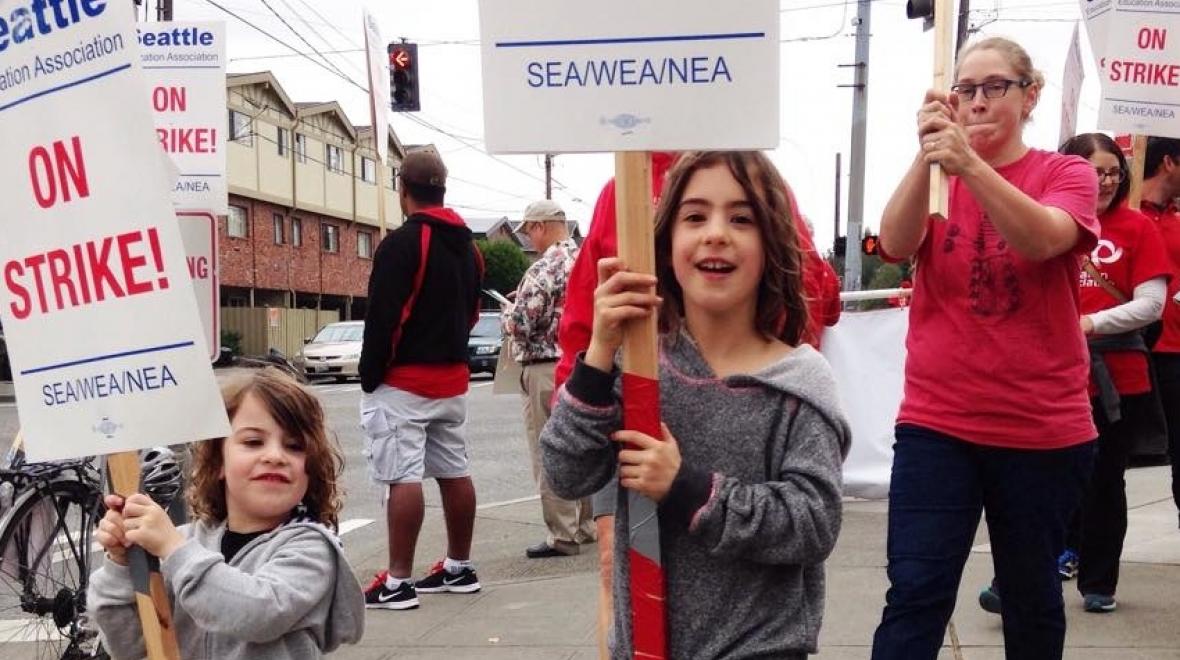
Photo:
Students protesting during the school shutdown in 2015. Picture by Jody Allard.
You might have heard that the state’s newest budget brings it into compliance with the McCleary decision, fully funding education in Washington state.
But as far as the Seattle Public School District is concerned, it doesn't. Representatives from the district told reporters at a media briefing Monday afternoon that the district — the largest in the state with 53,000 students — will be hit hard by the plan.
The district's comments came in response to a sweeping overhaul of the state's public education system by legislators in June, narrowly averting a government shutdown. The state Supreme Court has yet to weigh in on whether the budget approved by legislators goes far enough to fully fund public education. That decision could be made as early as October.
But in the meantime, Dr. Larry Nyland, superintendent of the Seattle Public School District, says Seattle taxpayers will be paying more and students will be receiving less.
The new budget dictates that levy dollars earned at the local level will be dispersed across the state, and it caps the amount that districts can earn from local levies at $2,500 per student. Currently, the district receives $3,400 per student.
At 53,000 students, the numbers add up into the millions, says JoLynn Berge, assistant superintendent for business and finance at Seattle Public Schools.
For the first couple of years, the legislators' plan actually puts the district in a better financial position, Berge explains. However, that trend ends by the year 2020-21 when the district sees the deficit grow. In 2020-21, the total expenditures will be $973.3 million, while the total revenues are anticipated to be $913 million, leaving a deficit of $24.2 million. That is a significant increase from a projected deficit of $5.5 million in 2018-19.
Of specific concern is the gap in funding for special education staff. State funding will increase from $46.2 million in 2017-18 to $68 million in 2019-20. But the projected costs of special education funding will increase enough to create a $53.3 million gap.
Special education services fall within the state's definition of basic education, Berge says. But a gap will still remain.
Nylon says the plan continues to leave the state at the middle or lower-middle level of education funding nationwide. "The budget put forward by the legislation does not achieve the state's paramount duty to fully fund education," he says.
Teacher and staff salaries are also a concern. Decreased funding will lead to struggles in paying competitive wages. "I make no apologies that we pay the fifth highest [wages] in the state," Nyland says. "We live in the most expensive housing market in the state."
Seattle won't be the only place to suffer. Berges says other districts, including those in rural areas, will be negatively affected. "All the districts share the same concerns," Berges says.
For now, the district is waiting on the state Supreme Court's decision. In the interim, the district has drafted a budget and will be opening schools on schedule in September.











